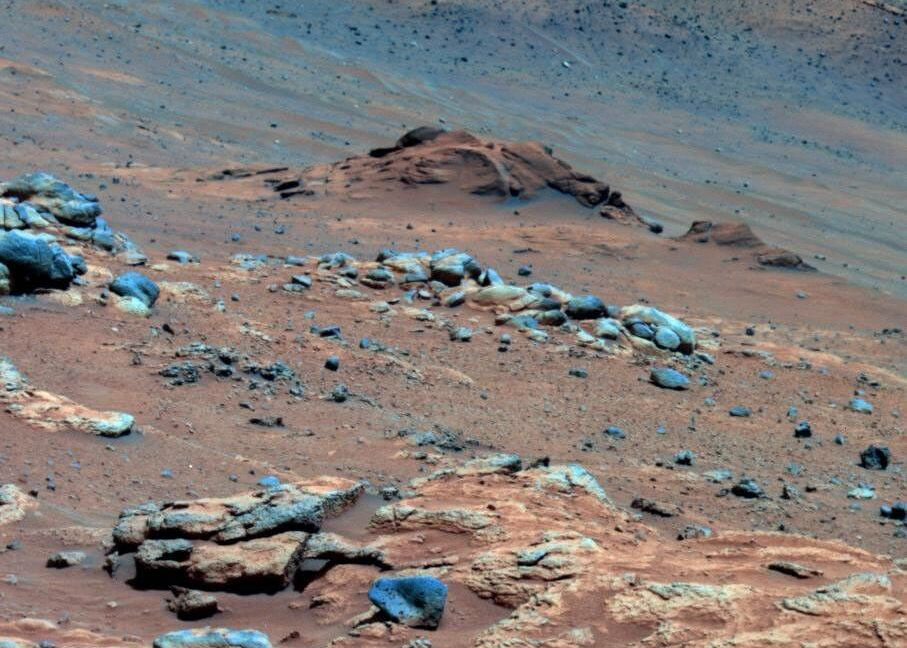A new Martian climate model suggest a mostly cold, harsh environment
“Very early in Mars’ history, maybe 4 billion years ago, the planet was warm enough to support lakes and river networks,” Kite told Ars. “There were seas, and some of those seas were as big as the Caspian Sea, maybe bigger. It was a wet place.” This wet period, though, didn’t last long—it was too short to make the landscape deeply weathered and deeply eroded.
Kite’s team used their model to focus on what happened as the planet got colder, when the era of salts started. “Big areas of snowmelts created huge salt flats, which eventually built up over time, accumulating into a thick sedimentary deposit Curiosity rover is currently exploring,” Kite said. But the era of salts did not mark the end of liquid water on the Martian surface.
Flickering habitability
The landscape turned arid, judging by Earth’s standards, roughly 3.5 billion years ago. “There were long periods when the planet was entirely dry,” Kite said. During these dry periods, Mars was almost as cold as it is today. But once in a while, small areas with liquid water appeared on the Martian surface like oases amidst an otherwise unwelcoming desert. It was a sterile planet with flickering, transient habitable spots with water coming from melted snow.
This rather bleak picture of the Martian landscape’s evolution makes questions about our chances for finding traces of life in there tricky.
“You can do a thought experiment where you take a cup of water from the Earth’s ocean and pour it into one of those transient lakes on Mars,” Kite said. “Some microbes in this cup of water would do fine in such conditions.” The bigger question, he thinks, is whether life could originate (rather than just survive) on ancient Mars. And, perhaps more critically, whether hypothetical life that originated even before the salts era, when the planet was warm and wet, could persist in the oases popping up in the Kite’s model.
The answer, sadly, is probably not.
A new Martian climate model suggest a mostly cold, harsh environment Read More »


